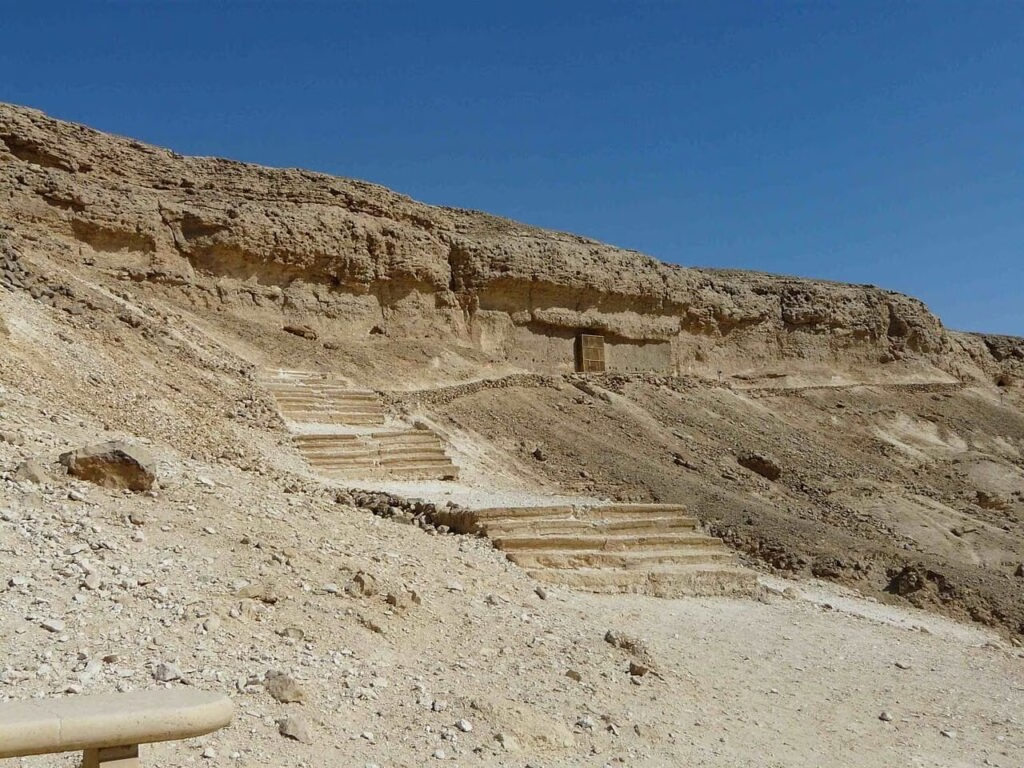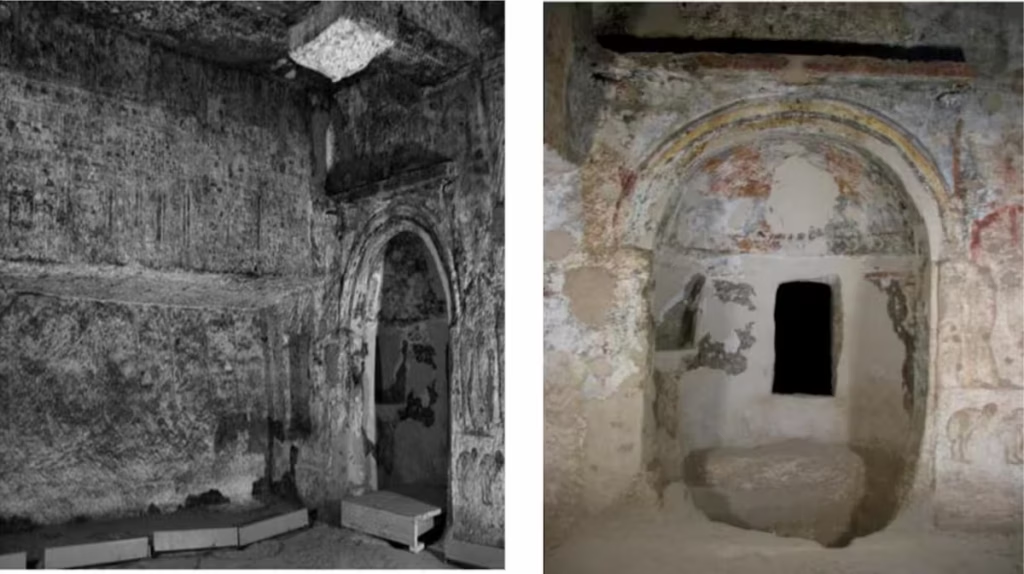New archaeological discoveries in Egypt are rewriting the story of Amarna—the once-radiant capital of Pharaoh Akhenaten. Founded in the 14th century BCE as a revolutionary center devoted solely to the sun god Aten, Amarna was long believed to have faded into obscurity after Akhenaten’s death. However, recent research reveals that the ancient city experienced a surprising second life—as a Christian monastic retreat during the Roman and Byzantine periods.
A Forgotten Chapter in Amarna’s History
Published in the Minia Journal of Tourism and Hospitality Research, new findings show that, far from being abandoned entirely, Amarna became home to Christian monks in the 5th and 6th centuries CE. Excavations in the northern cliffs of the site uncovered evidence of monastic settlements where rock-cut tombs were repurposed into humble dwellings, chapels, and workshops.

A Hidden Church in Panehsy’s Tomb
One of the most striking discoveries was made in Tomb 6, known as the Tomb of Panehsy. There, archaeologists uncovered a small church featuring an apse decorated with red crosses, birds, and eagle motifs—symbols deeply associated with early Egyptian Christianity. Additional artifacts, including looms, cooking vessels, and carved niches, point to a well-organized and self-sustaining monastic life.
From Pharaoh’s Capital to Sacred Solitude
According to the researchers, the monks who settled in Amarna were not fleeing persecution. Instead, they were drawn to the desert in search of spiritual purity and isolation—hallmarks of early Egyptian desert monasticism. The elevated cliffs overlooking the Nile Valley likely held symbolic meaning, serving as a threshold between the sacred and the secular.

Two Faiths, One Landscape
This discovery expands the historical significance of Amarna. It is no longer just a fleeting experiment in religious reform under Akhenaten but also a lasting chapter in the story of early Christianity in Egypt. The site stands as a rare example where two major religious shifts—Atenism and Christian monasticism—left lasting marks on the same sacred ground.
Ahmed Fathy Saddik, Samar Mostafa Kamal, Walaa Mohamed Abdekhakim (2025), Life at Amarna during the late Roman Period. Minia Journal of Tourism and Hospitality Research, vol.19, no.2. DOI:10.21608/mjthr.2025.383481.1199




